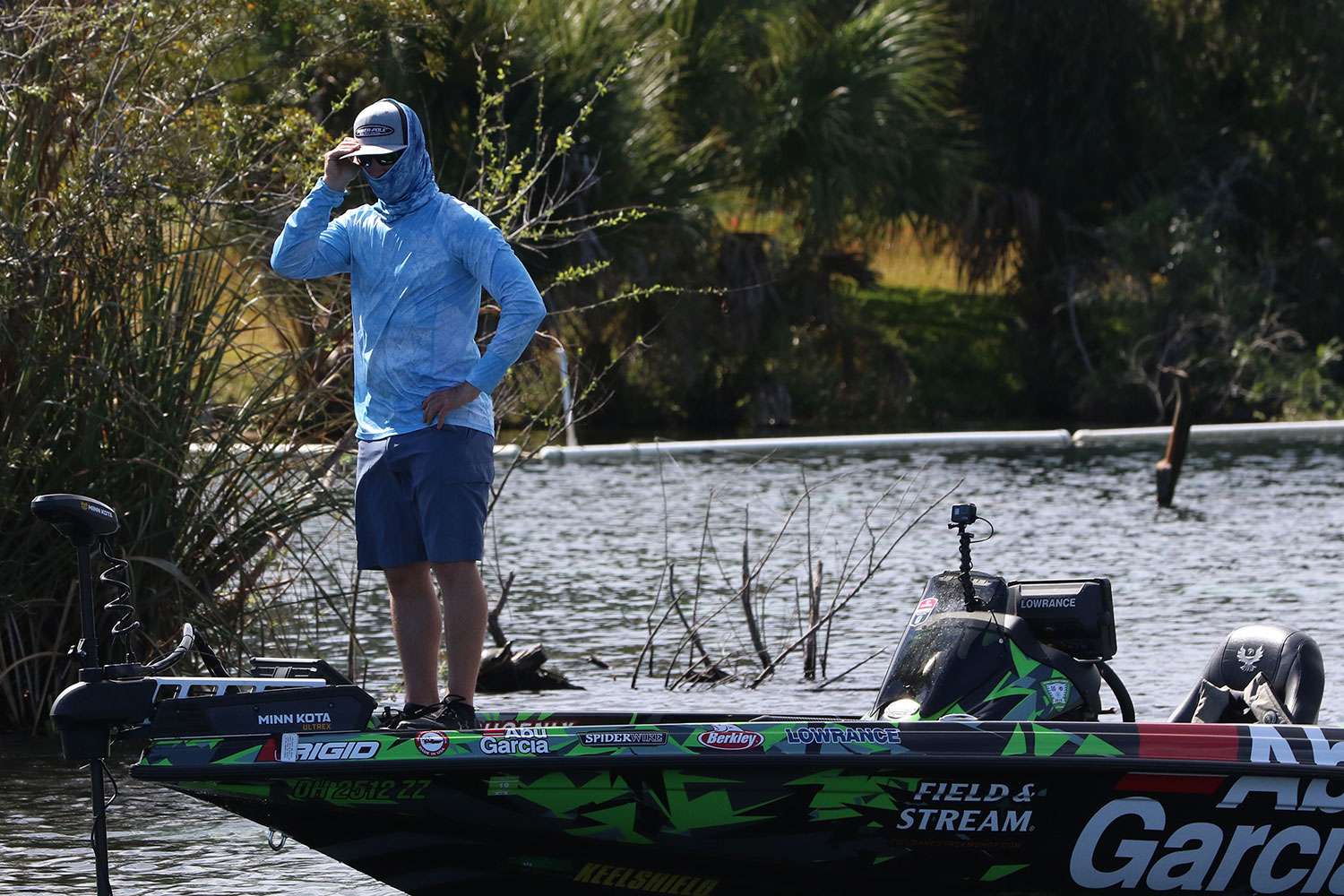
I use reels that have different gear ratios to help me overcome the diverse fishing situations I face on the Bassmaster Elite Series. I keep several spare baitcasting and spinning reels with various gear ratios in one of my rod lockers so I can make a switch whenever I feel the need to do so.
I felt that need when I fished for spotted bass during the recent Toyota Bassmaster Elite at Lake Lanier. I don’t claim to be a big-time spotted bass fisherman. What I’ve come to learn about spots is that they are highly aggressive, but they can also be so finicky that your presentation has to be perfect.
The water temperature was in the high 40s on the main lake and in the low 50s up the river. The spots were sluggish and demanded an ultra slow presentation. I found the bass hugging bottom 20 to 30 feet deep with my Lowrance electronics. I figured that dragging a little Berkley Powerbait Power Swimmer on a 1/4-ounce ball head jig would get them to bite.
I started with an Abu Garcia Revo Premier spinning reel. It has a 6.2:1 gear ratio, which works well in most situations. I’d cast my bait out, let it sink and try to reel slowly enough to keep it ticking the bottom.
Slowing down is hard to do when your adrenaline surges for all it’s worth during a major tournament. I reeled the bait as slow as I could stand it, but I kept pulling it up off the bottom. I couldn’t get bit. When I saw a bass on my bow graph follow the bait as I reeled it in, I knew my retrieve was too fast.
I switched to the Revo Winch spinning reel. It has a 4.7:1 gear ratio. I couldn’t believe how much easier it was to retrieve ultra slow and to keep my bait down where I could feel it touching the bottom and bumping off rocks. After that I began catching bass at nearly every drain and ditch I fished.
I had the Revo Winch spinning reel filled with 10-pound Spiderwire with an 8-pound Trilene 100% Fluorocarbon leader. I matched the reel to a 7-foot, 6-inch, Abu Garcia Fantasista Premier rod. That long rod takes up a lot of line on the hook-set. That was crucial.
I also had a spinning rod rigged with a Revo Rocket reel that has a 7.0:1 gear ratio. I needed that hyper-fast retrieve so I could drop on bass that suddenly showed up on my graph while I was casting. If I didn’t get close enough to the bass on the first drop, I could burn the bait back up and make another drop before the fish swam off.
My drop bait was a Powerbait Maxscent General that I cut in half and rigged on a Ned Head. You had to hit those bass on the head to make them bite.
I was also doing some cranking later in the day up the river. I typically use a 6.4:1 reel for cranking, but the 50-degree water forced me to switch to a 5.4:1 gear ratio Revo Winch Gen 4 to help me slow down. I was catching spots and largemouth by cranking banks 8 to 12 feet deep with a Berkley Dredger.
If I hadn’t switched to reels with slow gear ratios at Lanier, I might have crashed and burned. Using the right gear ratios helped me finished 27th. I’m currently 25th in the AOY standings, still on track to qualify for the 2020 Bassmaster Classic.
There have been many other instances where switching to a reel with a slower or faster gear ratio has saved my bacon. A fast reel was the key to my second place Bassmaster Opens finish at Tennessee’s Douglas Lake in 2017.
I fished the first day with a 6.4:1 reel. I was casting a swim jig and a Chatterbait. When the bass bit they were pushing the bait toward me so fast I could hardly get a hook into them. I lost three or four key fish.
That night I rigged a rod with an 8.0:1 gear ratio Revo AL-F reel so I could pick up line faster when I set the hook. After that, I landed every single bass that bit.
The moral is that reels are tools and you gotta have the right tools to be doing certain applications. Choosing the right gear ratio can make all the difference in getting those bites and landing those bass.

